THE ACORN – 86
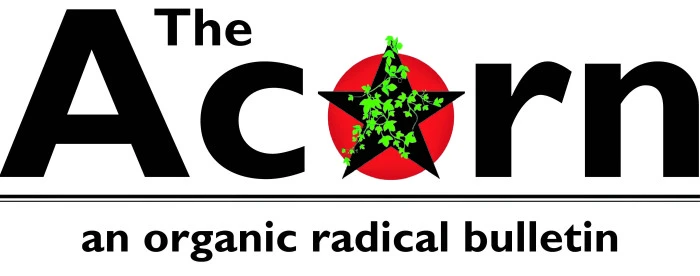
In this issue:
- BRICS: same old same old
- China: a SAFE bet for global finance
- The Good in Our Hearts
- Ivan Aguéli: an organic radical inspiration
- Acorninfo

The stark reality behind the apparently refreshing rise of the BRICS nations against US/European imperialism is becoming increasingly apparent.
The historical and contemporary evidence presented on this site in July does not seem to have been enough to curb enthusiasm for a rebranded, modern, enlightened, multi-polar version of the new world order amongst the entirety of our broader readership.
So we would direct these hopeful individuals to the BRICS declaration signed by member states after the recent summit in Johannesburg, South Africa, for a bracing shower of geopolitical cold water.
To give a flavour of the thing, the term “sustainable development” features no fewer than 21 times in the document and “inclusive” 17 times!
The new kids on the BRICS bloc commit to “upholding international law, including the purposes and principles enshrined in the Charter of the United Nations as its indispensable cornerstone” and thus pledge their allegiance to the established global criminocracy.
They double down on this by adding: “We reiterate our commitment to enhancing and improving global governance”.
So that’s very clear – more top-down global control – and they even go on to declare that this should be carried out in the “agile” way specifically recommended by Klaus Schwab of the WEF in his 2018 book Shaping the Future of the Fourth Industrial Revolution: A Guide to Building a Better World.
The BRICS declaration echoes the global industrial mafia’s insistence that human rights include something called “the right to development”, and that such “rights” should be implemented “on the level of global governance”.
They’re not hiding their world-state agenda!
The “build back better” theme finds its way into the declaration, even if that exact phrase is avoided, presumably so as not to alarm all the BRICS fanboys and fangirls.
They say: “We call on the international community to support countries in working together towards post-pandemic economic recovery.
“We emphasise the importance of contributing to post-conflict countries’ reconstruction and development and call upon the international community to assist countries in meeting their development goals”.
And later they add: “We will look to identify solutions for accelerating the implementation of the 2030 Agenda for Sustainable Development”.
Not just implementing, but accelerating, and the same term crops up in a section on industrialism – unsurprisingly perhaps since this is, in truth, exactly the same thing as “sustainable development”.
The BRICS gang declare: “We commit to strengthening intra-BRICS cooperation to intensify the BRICS Partnership on New Industrial Revolution (PartNIR) and create new opportunities for accelerating industrial development…
“We reiterate our commitment to continue discussion on the establishment of BCIC in cooperation with UNIDO to jointly support the development of Industry 4.0 skills development among the BRICS countries and to promote partnerships and increased productivity in the New Industrial Revolution”.
So the “New Industrial Revolution” is another term for the Fourth Industrial Revolution – again, very much the Klaus Schwab agenda in evidence here.

The “development” path along which the BRICS nations are being led is a well-trod one.
First, expensive industrial projects have to be defined as a good thing, so to this effect the declaration says: “We recognise that infrastructure investments support human, social, environmental, and economic development.
“We note that the demand for infrastructure is growing, with a greater need for scale, innovation and sustainability”.
Then, in order to pay for this supposedly essential infrastructure, they are encouraged to open the doors to foreign financial parasites and take out huge loans from the global banksters behind the whole racket.
They phrase it a bit differently of course: “We further recognise that leveraging governments’ limited resources to catalyse private capital, expertise and efficiency will be paramount in closing the infrastructure investment gap in BRICS countries”.
The interests driving the BRICS agenda are all too obvious with the statement that “we oppose trade barriers including those under the pretext of tackling climate change”.

Again and again, the Great Reset programme crops up in the declaration issued by this supposedly brand-new and independent alliance of nations.
“We commit to intensify our efforts towards improving our collective capacity for global pandemic prevention, preparedness, and response, and strengthening our ability to fight back any such pandemics in the future collectively.
“In this regard, we consider it important to continue our support to the BRICS Virtual Vaccine Research and Development Center.
“We look forward to the holding of the High-Level Meeting on Pandemic Prevention, Preparedness and Response to be to be held on 20th September 2023 at the United Nations General Assembly and we call for an outcome that will mobilise political will and continued leadership on this matter”.
“Leadership” by whom?
Finally, we have to mention a rather strange line in the declaration linking Covid to the threat of “terrorism”, stressing “the need for a comprehensive and balanced approach of the whole international community to effectively curb the terrorist activities, which pose a serious threat, including in the present-day pandemic environment”.
The document adds: “We welcome the activities of the BRICS Counter-Terrorism Working Group and its five Subgroups based upon the BRICS Counter-Terrorism Strategy and the BRICS Counter-Terrorism Action Plan. We look forward to further deepening counter-terrorism cooperation”.
Now, come on, all you BRICS-buddies! This is quite clearly the same old system that has been running the show for a very long time now!
2. China: a SAFE bet for global finance

An important report was published in August by our friends at Corporate Watch UK, exposing the hypocrisy of the global financial giants who preach about “saving the planet” while continuing to profit from its destruction. One of those featured is Vanguard, which is described, alongside its Rothschildian stablemate BlackRock, as being “one of the world’s top investors in the coal industry – with over $100bn (£79.3bn) invested in the sector”. Here, to underline the points we have been making about BRICS, we reproduce the very enlightening section on China’s Safe Investment Company.

SAFE Investment Company Ltd. is one of China’s sovereign wealth funds (SWFs). It is the Hong Kong subsidiary of China’s foreign exchange regulator, the catchily-named State Administration of Foreign Exchange. Its ultimate parent is the country’s central bank, the People’s Bank of China.
Established in 1997, last year SAFE controlled nearly $1tn in assets, coming in just behind the China Investment Corporation (CIC), one of the world’s largest SWFs. China’s multiple SWFs were set up in the late nineties and early noughties as the government sought to increase engagement with international markets. Seeing an opportunity, SAFE began buying into major global firms during the 2007-8 financial crisis. Among the companies it began investing in at this time was BP; by 2008 it had upped its share in the company to a potential $2bn (£1.6bn).
Its shares in Shell and BP represent the company’s most valuable holdings, currently amounting to around £1.8bn and £1.2bn respectively. Besides these British oil giants, UK companies feature prominently among SAFE’s top public investments. These include pharmaceutical companies, AstraZeneca and GSK, and mining behemoths Anglo American and Rio Tinto. It invests in Yara, among the world’s largest producer of fertiliser (see Corporate Watch’s profile on Yara and its role in climate chaos here). These holdings are followed by a host of major Western brands, from Tesco and Lloyds Bank, to Burberry, Next, Whitbread and Compass Group.
It owns 0.47% of the UK’s National Grid – a holding currently worth £198m – and even has a stake in the London Stock Exchange.
SAFE’s largest shareholdings betray a particular interest in North Sea oil and gas, China being the world’s biggest importer of oil. It holds millions worth of shares in Subsea 7, an engineering firm servicing the offshore petrochemicals industry, notably North Sea oil. Subsea 7 is in turn is being awarded contracts by Norway’s state oil firm Equinor – which SAFE also has a stake in.
Despite having such a broad array of investments in global companies, like other sovereign wealth funds there is remarkably little publicly available information on SAFE. It does not publish information, at least in English, on any environmental standards.
UK location: unclear if any.
Governor of the People’s Bank of China: Yi Gang
The management structure of SAFE Investment Co Ltd is not transparent. However, we know that the State Administration of Foreign Exchange is led by Pan Gongsheng, currently also Deputy Governor of its parent, the People’s Bank of China (PBoC). He answers to former SAFE administrator, and current head of the PBoC, Yi Gang.
Yi Gang gained a Ph.D in Economics from the University of Illinois and later taught at Indiana University, Indianapolis, which he has referred to as his “second home”. Following his leadership at SAFE, he worked at the PBoC until he was appointed to the role of PBoC governor – the top management position – in 2018. He has just been re-appointed to the post for a second five-year term despite expectations to the contrary. Following an economic slowdown in China owing to strict COVID-19 lockdown measures, a weakening real estate market, and inflation hitting demand for Chinese goods abroad, this decision has been read as a bid by the Chinese state to maintain the appearance of stability.
But even a man described as “the most prominent Chinese figure in global finance”, is to some extent just a figurehead. He reportedly has no role in developing state monetary policy, as is the case in many other countries. Instead he implements the decisions of a “policymaking body whose membership is a secret”.
And as we can expect, any details on his interests, personal life, family connections and property remain well-hidden from public view.

by Paul Cudenec
Although evil rules the world from above, good survives below in decent, ordinary people like you, in the hearts of the victims of deceit even when their heads have been fully captured.
And the good that beats within you, that flows in the blood of everything alive, in the sap of the trees and the waters of the rivers, the good of nature and and reality and existence, is the force that will defeat evil.
But in order to do so, it must fight the avatars of evil with avatars of good; men and women who are prepared to do the opposite to what the tyrants do.
Instead of placing self-interest at the centre of our lives, we must cast it aside in the name of principle, nature, truth, beauty and freedom for all.
We must give ourselves to good, channel good, become good to the extent that our limited human form allows.
And we must live for nothing else!
This is a speech from near the end of a short one-act play that I have just penned and which is available as a free pdf, as well as being for sale as a modestly-priced booklet via the usual commercial outlets.
Without giving too much away, The Good in Our Hearts takes place in a park in central London.
George thinks that he is alone when he complains out loud about the state of contemporary society, but he has been overheard by Jim, from underneath a nearby bench, who offers some pithy commentary.
Their conversation in turn attracts the critical interest of Denise, who is then herself confronted by an angry Trevora.
Finally, a green-robed mystic, Ashok, emerges from inside a tree to explain to the other four what has gone wrong with the modern world and what is required to put things right.
It was written with the idea of it one day being physically staged, so if anyone would like to do so, please do get in touch!
4. Ivan Aguéli: an organic radical inspiration
The latest in our series of profiles from the orgrad website.

“It is a beautiful phenomenon, anarchism. It is for certain the most beautiful in our filthy time”
Ivan Aguéli (1869-1917), also known as Abdul-Hâdi, was a Sufi anarchist and post-impressionist artist who moved from Stockholm to Paris in the 1890s.
He has been identified as being in the same ideological current as organic radical thinkers Leo Tolstoy and Paul Cudenec (1) and played a crucial part in launching the whole perennialist/Traditionalist movement associated with René Guénon.
Writes Mark Sedgwick: “His personal impact on Guénon was major, as it was at his hands that Guénon converted to Islam and became Abd al-Wahid”. (2)
Aguéli’s articles and translations featured in Guénon’s reviews La Gnose (1911-1912) and Le Voile d’Isis, later known as Etudes traditionnelles (1933-1946) and thus helped shape the movement’s evolution.

Indeed, leading French Traditionalist and Sufi Michel Vâlsan (1911–74) noted in 1953 that the whole Traditionalist movement was in some ways the fulfillment of Aguéli’s original vision. (3)
So what was this vision? To start with, Aguéli was, of course an anarchist. He wrote in 1893: “It is a beautiful phenomenon, anarchism. It is for certain the most beautiful in our filthy time. Imagine a sunrise and a sunset at the same time”. (4)
By this time he had already visited the Anarchist Club in London and reportedly met Peter Kropotkin. (5)
His association with anarchists in Paris – he shared accommodation with Charles Chatel (1868–97), the editor of the periodical L’En Dehors and then of the Revue Anarchiste – led to him being arrested and held in prison in 1894 before being narrowly acquitted of wrongdoing in a jury trial. (6)
Robin Waterfield describes how he used his time behind bars to “study Hebrew and Arabic besides reading such writers as Fabre d’Olivet, Dionysius the Areopagite, Villiers, L’Isle Adam and, not surprisingly, his compatriot Swedenborg”. (7)
Along with his lover Marie Huot, described by Sedgwick as “an anarchist, a vegetarian and an animal rights activist”, (8) Aguéli achieved some kind of notoriety in the French capital and in 1900 shot and wounded a matador in a protest against the proposed introduction of Spanish-style bullfighting to France. (9)
In the French capital, Aguéli became known for his extravagant behavior. “Quick tempered and given to making lengthy speeches on unpopular subjects such as the excellences of anarchism, he frequently wore a turban or Arab dress”, (10) says Sedgwick.
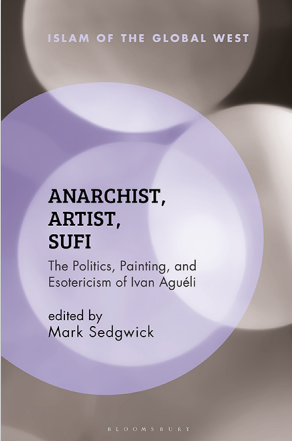
While living in Cairo, he was in contact with members of the “vibrant” (11) Egyptian anarchist movement.
Meir Hatina describes how his outlook embraced individual freedom, equality for all without discrimination, public education, social justice, empathy for the weak and political defiance of state structures of oppression.
“In his perception, a moral society based on mutual aid and mass education was a sine qua non in an age where the universal moral compass became indifferent and fatalist. In line with anarchist thinking, Aguéli also ruled out militarism and wars, and preached universal brotherhood”. (12)
Aguéli was strongly opposed to imperialism: its centralization of power and exploitation represented the exact opposite of his anarchist ideals.
In Cairo he worked with Enrico Insabato (who later turned out be an agent of the Italian state sent to infiltrate the anarchist movement!) on an “unusual, half-political, half-theological periodical” (13) in Italian, Arabic and sometimes Turkish, called Il Convito and/or Al-Nadi.
This review, says Paul-André Claudel, “developed a very critical opinion of Western exploitation”, (14) mainly singling out France and Britain, but also Germany, Austria, Russia and Spain (though not Italy!).
When the global empire of “development” destroys human community in the name of “progress”, it simultaneously brands all those who oppose such destruction as “reactionary” obstacles to the inclusive and sustainable modernity which it is generously spreading across the world.

But the radical Aguéli “was deeply involved in the struggle for Arab cultures to retain their uniqueness in their encounter with the modern European ideas that were quickly gaining entry with colonialism”, (15) as Viveca Wessel explains.
Moreover, he and his comrades saw with complete clarity the way that so-called “progress” was used as a propaganda device to justify the worldwide expansion of private wealth and power at the expense of people everywhere.
They declared in Il Convito: “We are against the Europeanization of Muslim countries: the system has given bad results and we consider so-called ‘progress’ as a huge fraud that we must unmask. It is nothing but stupid and useless vandalism: it means the destruction of harmonies and of sentimental and architectural orders that we want to preserve at all costs”. (16)
The aim here was “to encourage a return to a more traditional Islamic identity, which was considered under threat by the West,” writes Claudel, (17) invoking “a form of ideological traditionalism, far from any ‘modern’ and ‘liberal” model’.” (18)

The universalism that attracted Aguéli to Islam also led him to place his adopted religion within a broader context – a central theme of the perennialist/Traditionalist outlook which he helped create,
He wrote in 1911: “Islam has many points of comparison and contact with most other systems of belief or of social organization. It is neither a mixed nor a new religion.
“The Prophet expressly states that he has invented nothing whatsoever as far as dogma or religious law is concerned. He has only restored the ancient and primeval faith.
“That is why there are so many similarities between Taoism and Islam. This assertion is not mine, but one that has been made by famous Muslim and Chinese authors”. (19)
In defending Islam from Western hostility in 1904, Aguéli deployed the term “Islamophobia” – possibly inventing the word. (20)
But at the same time he defended Sufism from modern reformers within Islam who, says Sedgwick, “tended to dismiss it as superstitious and obscurantist”. (21)
Seyyed Hossein Nasr later depicted Sufism as the “heart of Islam” (22) and for Aguéli the heart was the centre of “universal intelligence”. (23)
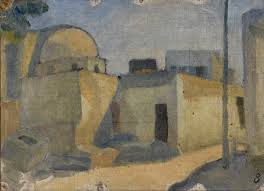
This belief in the belonging of the individual to a universal entity has led to some misunderstanding about the compatibility of Islam and anarchism.
Aguéli wrote: “The word Islam is an infinitive of the causative verb aslama, to give, deliver, hand over. There is an ellipsis: li-llahi (to God) is understood; al-Islamu li-llahi therefore means: to hand oneself over to Allah, that is to say, to obediently and consciously follow one’s destiny”. (24)
At first glance, there seems to be a clash here between the anarchist belief in individual freedom and the Islamic imperative to hand oneself over to Allah.
But when one grasps that Aguéli equates Allah with the individual’s own destiny, the apparent contradiction evaporates.
“Everyone carries his destiny within himself”, (25) he stresses. “The order consists of following one’s destiny obediently and consciously, which means to live, to live one’s entire life, which is that of all lives, that is to say, to live the lives of all beings…
“The more the life of self identifies with the life of non-self, the more intense living becomes. The fusion of self into non-self takes place through the more or less ritual, conscious, or voluntary gift.
“It is easy to understand that the art of giving is the principal arcanum of the Great Work. The secret of this art consists in absolute disinterestedness, in the perfect purity of the spirit in the act, i.e., of the intention; in the complete absence of all hope of return, of any sort of recompense, even in the world to come”. (26)

Far from being at odds with his anarchism, this statement reflects the anarchist conviction that true individuality lies in finding the strength to surpass mere individualism for greater ends.
The “giving” of which Aguéli writes is nothing other than the selflessness, the desire to give one’s life to “the cause”, which gave a quasi-religious feel to historical anarchism, even when its adherents were avowed atheists.
It is a question of rising up from the low ego-bound condition of need and fear encouraged by the modern system and boldly accessing a spiritual potential which that same system assures us does not exist.
“The identity of self and non-self is the Great Truth, just as the realization of this identity is the Great Work”, (27) writes Aguéli.
He explains that there are two types of reality: “The first is reality as it appears to ordinary people, meaning people in possession of their five senses and their combinations according to the laws of mathematics and elementary logic. The second reality is an awareness of eternity. In the tangible world, the one corresponds to quantity, the other to quality”. (28)
Aguéli’s role as an artist is as deeply entwined with his Sufism, his anarchism and his Traditionalism as those three aspects of his life are entwined with each other.
Essayists have described how his “aesthetic sensitivity toward nature, landscapes, animals, and of course human beings” and to the contrasting ugliness of modern European “civilization” (29) led him to understand that “what is beautiful relates to what is true, good, and ordered”. (30)
There is an obvious parallel here with the anti-industrialist aesthetics of the Pre-Raphaelites in Britain, which is explored here.
William Morris and his fellow artists regarded light in art as a representation of beauty, reality, nature, goodness and purity – qualities which all went hand in hand, according to their holistic philosophy.
This theme was later taken up by Ananda Coomaraswamy, who explained, in his study of the medieval theory of beauty, how the form, beauty, goodness and truth of a thing are seen as deeply connected, almost synonymous. (31)
Art was the product of an inner universal light and the individual artist was the channel through which this light passed and made itself visible to us.
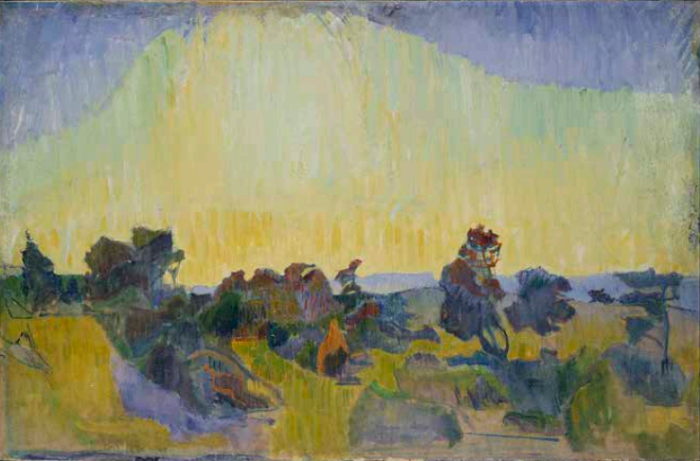
Aguéli, enthusing in 1911 about what he terms “pure art”, writes: “I have seen works by Picasso wherein rays of light have crystallized into a mosaic of precious cut stones and enormous diamonds of extraordinary transparency”. (32)
In a work of art, “the antithesis of line and color finds its immediate resolution in light”, he writes.
“One need only consider a drawing of the old masters: despite the monochrome or the black and white it always gives us the impression of color. Their paintings, though blackened or faded by the passage of time, always appear lit by a sun created by God specifically for each one of them… an impression of luminosity that gives a work of art its life and magic”. (33)
Art, for Aguéli, can offer a glimpse of “motionless time” or “the permanent presence of the extra-temporal and undying self” and the best kind “impresses itself directly, without any intermediary, through an internal material sensing of the beating pulse of life itself”. (34)
These reflections, which obviously informed his own art, were very much drawn from his study of the Sufi philosophy of light.
Simon Sorgenfrei notes: “Light as metaphor for divine power and illumination has a long standing in Islamic tradition (as it does in many other religious traditions)”. (35)
Aguéli ended up being expelled from Egypt in 1916 by the British colonial authorities, who regarded him as a threat to their imperialist activities in the First World War. (36) This hostile move led to his flight to Barcelona, where he died, penniless and under a train, the following year.
There is an Aguéli museum in his home town of Sala in Sweden.

1. Anthony T. Fiscella, ‘Kill the Audience: Ivan Aguéli’s Universal Utopia of Anarchism and Islam’, Anarchist, Artist, Sufi: The Politics, Painting, and Esotericism of Ivan Aguéli, edited by Mark Sedgwick (London: Bloomsbury, 2021), p. 93.
2. Mark Sedgwick, ‘The Significance of Ivan Aguéli for the Traditionalist Movement’, Anarchist, Artist, Sufi, p. 176.
3. Michel Vâlsan, “L’islam et la fonction de René Guénon,” Études traditionnelles 305 (January 1953): pp. 44-6, cit. Sedgwick, ‘The Significance of Ivan Aguéli for the Traditionalist Movement’, Anarchist, Artist, Sufi, p. 165.
4. Ivan Aguéli, ‘Letter from Paris’ (1893), Anarchist, Artist, Sufi, p. 192.
5. Viveca Wessel, ‘Ivan Aguéli’s Life and Work’, Anarchist, Artist, Sufi, p. 22.
6. Wessel, p. 24.
7. Robin Waterfield, René Guénon and The Future of the West: The life and writings of a 20th-century metaphysician (Wellingborough: Crucible, 1987), p. 40.
8. Mark Sedgwick, Against the Modern World: Traditionalism and the Secret Intellectual History of the Twentieth Century (New York: Oxford University Press, 2009), p. 60.
9. Sedgwick, Against the Modern World, p. 61.
10. Sedgwick, Against the Modern World, pp. 62-63.
11. Meir Hatina, ‘Ivan Aguéli’s Humanist Vision: Islam, Sufism, and Universalism’, Anarchist, Artist, Sufi, p. 146.
12. Ibid.
13. Paul-André Claudel, ‘Ivan Aguéli’s Second Period in Egypt, 1902-9: The Intellectual Spheres Around Il Convito/Al-Nadi, Anarchist, Artist, Sufi, p. 102.
14. Claudel, pp. 107-08.
15. Viveca Wessel, ‘Ivan Aguéli’s Life and Work’, Anarchist, Artist, Sufi, p. 26.
16. Il Convito, no. 19 (1904), cit. Alessandra Marchi, ‘Sufi Teachings for Pro-Islamic Politics: Ivan Aguéli and Il Convito’, Anarchist, Artist, Sufi, p. 120.
17. Claudel, pp. 112-13.
18. Claudel, p. 112.
19. Abdul-Hâdi/Ivan Aguéli, ‘Universality in Islam’ (1911), Anarchist, Artist, Sufi, p. 230.
20. Hâdi/Aguéli, ‘The Enemies of Islam’ (1904), Anarchist, Artist, Sufi, p. 205.
21. Mark Sedgwick, ‘Ivan Aguéli: Politics, Painting and Esotericism’, Anarchist, Artist, Sufi, p. 6.
22. Seyyed Hossein Nasr, The Heart of Islam: Enduring Values for Humanity (New York: HarperCollins, 2002), cit, Hatina, p. 149.
23. Hâdi/Aguéli, ‘Universality in Islam’, p. 225.
24. Hâdi/Aguéli, ‘Universality in Islam’, p. 224.
25. Ibid.
26. Hâdi/Aguéli, ‘Universality in Islam’, p. 226.
27. Hâdi/Aguéli, ‘Universality in Islam’, p. 228.
28. Hâdi/Aguéli, ‘Universality in Islam’, pp. 221-222.
29. Hatina, p. 143.
30. Simon Sorgenfrei, ‘Ivan Aguéli’s Monotheistic Landscapes: From Perspectival to Solar Logics’, Anarchist, Artist, Sufi, p. 58.
31. Ananda K. Coomaraswamy, The Transformation of Nature in Art (New York: Dover, 1956).
32. Hâdi/Aguéli, ‘Pure Art’ (1911), Anarchist, Artist, Sufi, p. 219.
33. Hâdi/Aguéli, ‘Pure Art’, p. 213.
34. Hâdi/Aguéli, ‘Pure Art’, p. 212.
35. Sorgenfrei, p. 63.
36. Sedgwick, ‘Ivan Aguéli: Politics, Painting and Esotericism’, p. 3.

The British state privately supported the ruthless military coup against the elected government of Chile in 1973, official papers reveal. And the exchanges unearthed by Declassified UK nicely illustrate the way that the UK does not operate in the interests of its population, as it likes to pretend, but in those of the City of London. Officials felt “most British businessmen” would be “overjoyed” at General Pinochet’s coup. Admitting that “our major interest in Chile is copper” – “our”? – they reported that companies such as Rothschild-linked Shell were are all “breathing deep sighs of relief” that the threat of democracy and nationalisation had been crushed.
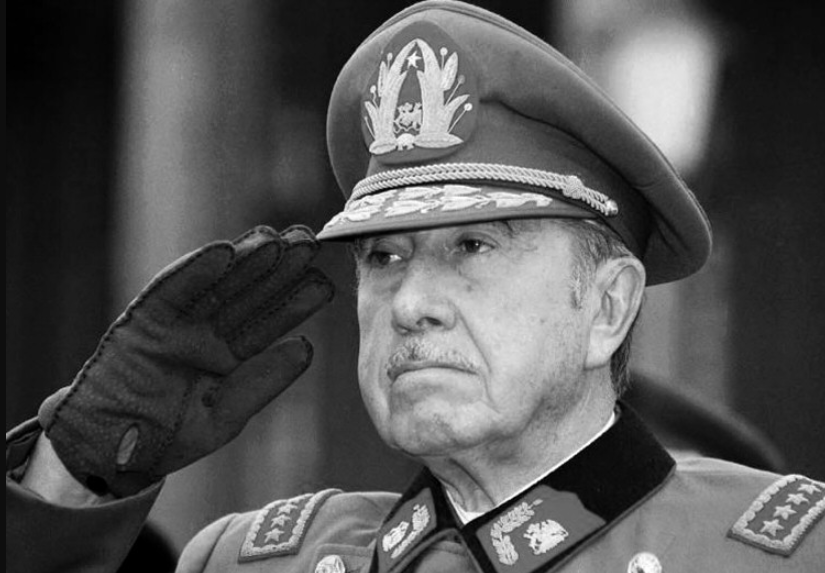
* * *
Dealers in death are currently flocking to London for DSEI, one of the world’s biggest arms fairs. A number of protests are being organised against their toxic presence, including a Festival of Resistance from 12 noon on Saturday September 9, at the Eastern Entrance of the ExCeL Centre in London Docklands. Say campaigners at Stop the Arms Fair: “This is where those who profit from war, repression and injustice do business. This is where we can stop them”.

* * *
A worldwide rally for freedom, on the theme “I will not comply”, is being staged on Saturday September 23, 2023. The UK protest meet-ups include 1pm at Speakers’ Corner, Hyde Park, London, and 1pm in Piccadilly Gardens, Manchester. Meanwhile the BBC has admitted it wrongly claimed “far-right” groups had attended a London protest against the Ulez traffic restriction zone. Exactly why it did so was not made clear.

* * *
“They’re fascists. They applaud the crackdown on dissent. They applaud the criminalization of dissent. They want people who offend them cancelled. They want anyone who refuses to conform to their official ideology erased”, writes dissident C.J. Hopkins about the totalitarians who rule the world. And he should know – the Berlin-based playwright and satirist has been issued with a “punishment order” by the German state and a choice of 60 days in jail or a fine of 3,600 euros. His “crime“? Two tweets and a book cover that the authorities didn’t like.

* * *
“It says here quite clearly that ‘the COVID-19 pandemic positively impacted the impact investing industry’. Now, a pandemic alone didn’t do anything, it was the government response and I don’t believe that it was entirely coincidental. It increased social inequality and, as I said, and you highlighted and you saw first-hand, how it impacted families, pushing them to the brink”. This fascinating conversation between Taschi and Kate Mason has now been added to our Impact Slavery page, which we encourage our readers to check out.

* * *
“I don’t know that I’ve seen anything get such positive response from such a diverse group of people. And I think that terrifies the people that I sing about in that song”, says Oliver Anthony of his viral rebel song Rich Men North of Richmond. Anarchist singer David Rovics (who has been targeted by fake anti-fascists, as we reported) and rapper Dax have since brought out their own versions of Anthony’s inspiring hit. Says the latter in his recording: “That’s how they attack us, it starts with the youth, if you lie enough you’ll convince anybody the lie is the truth”.

* * *
“What we call ‘transgenderism’ is really a vehicle for totalitarianism and censorship. There are four conditions that have to be put in place for that to happen, and to subvert all our institutions, especially schools, universities, and the corporate world”, explains author Stella Morabito in a conversation with Nancy Robertson featured on The 11th Hour blog. She continues: “The four conditions are: 1, consolidating state power under the guise of promoting individualism; 2, sowing chaos into the language; 3, state censorship; and 4, an aggressive campaign of propaganda and agitation”.

* * *
“The aims of the elites pushing for the great reset are so far away from normal, decent human values, they know that in order to usher in what they want for us, a slow evolution simply isn’t going to cut it. They need a series of shocks and psyops to demoralise and disorient people to get them to the point where they’ll be more compliant”. Interesting reflections on the crumbling condition of contemporary society in this September 4 piece from our friends at The Stirrer.
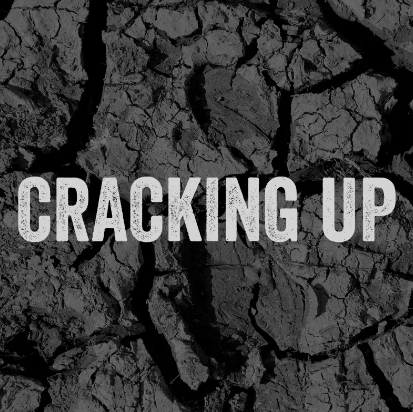
* * *
“No national electorate on Earth has ever given their democratic mandate for the UN to create a global governance regime to serve the interests of private capital. But that is precisely what it has done”. So writes Iain Davis in an excellent article which we summarised in this thread on X/Twitter.

“Pulling himself together on the border-line of destruction, the independent human being may arise, one who will take matters into his own hands and will enjoy true being” – Karl Jaspers

(For many more like this, see the Winter Oak quotes for the day blog)
If you like this bulletin please tell others about it. Subscribe by clicking the “follow” button.
—–
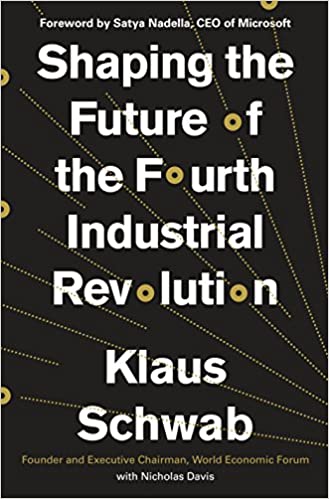



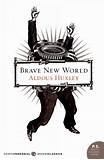
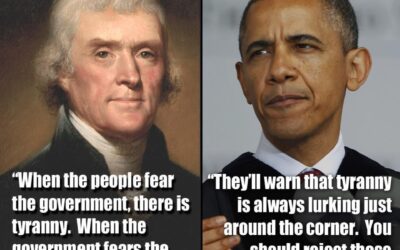




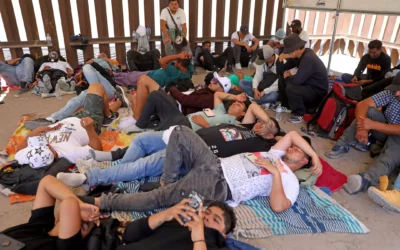
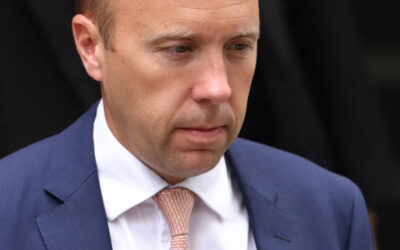
0 Comments